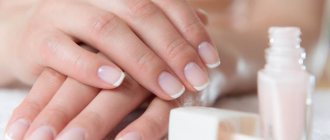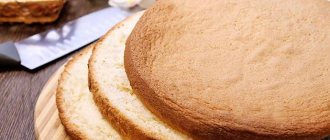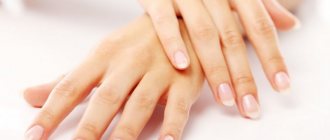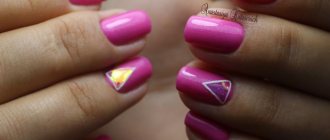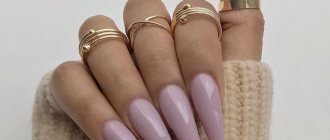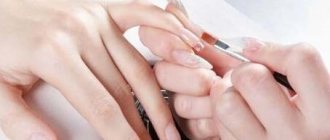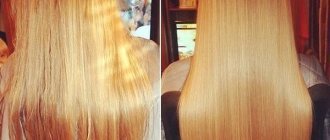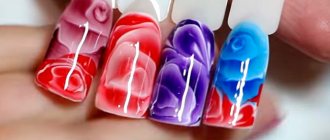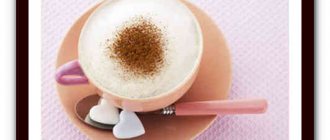Rules for self-care of fingernails
To keep your nails beautiful and healthy, you need to nourish and protect them. There are several simple rules for home care:
- When doing everyday things (cleaning, laundry, washing dishes), it is advisable to protect your hands from exposure to aggressive factors using rubber gloves;
- if it is inconvenient to work with gloves, you can apply silicone protective cream to your hands, which creates a waterproof film;
- for washing your hands, it is better to choose mild detergents with natural ingredients;
- Every time after washing your hands, you need to apply a moisturizing or nourishing cream - this will avoid drying out your skin and nails;
- to maintain normal water balance you need to drink 2 liters of fluid every day;
- You need to choose the right care products. When purchasing nail polish remover, it is better to give preference to an acetone-free variety;
- After removing decorative varnish, the surface of the nail plates should be lubricated with special oil.
Before starting homework, lubricate hands with silicone cream
Nail care in different seasons of the year
At different times of the year, nail care may have some differences. In summer, skin and nails are exposed to the negative effects of ultraviolet radiation and dry hot air. In addition, many people actively work in the garden in the summer. During this time, it is advisable to adhere to the following principles of care:
- Residents of large cities are advised to cover their nails in hot weather with a double layer of medicated varnish - this will protect their nails from drying out and splitting. These products can be applied weekly;
- Those who spend a lot of time in the garden or vegetable garden should definitely wear gloves. Depending on the type of work, you can wear rubber or cloth household gloves;
- the skin of your fingers that has become rough and darkened from working in the beds can be whitened and softened by massaging with a piece of lemon or lime for a few minutes;
- When going to the sea, it will be useful to remove nail polish. Sea water contains a colossal amount of elements that are beneficial to nails;
- after being in salt water, hands should be rinsed with fresh water or wiped with a damp cloth;
- In the summer heat, nails and cuticles need to be additionally moisturized with a nourishing cream.
When working in the garden or vegetable garden, you need to wear rubber household gloves.
In winter, skin and nails suffer from frost and wind. Those with dry, sensitive skin feel this especially strongly. Features of winter nail care are as follows:
- when going outside in cold weather, be sure to wear warm gloves;
- Every day you need to apply nourishing cream to your hands, especially carefully treating the nail plates and ridges around them;
- It is very useful to make paraffin masks - they improve blood circulation in the capillaries of the hands, nourish and moisturize the nails.
Nourishing hand and nail cream is applied after each wash.
What can a nail plate tell you?
Nails do not always look healthy and strong. For many they peel off. Some people often break. Some complain of the appearance of white spots. All this is not happy and needs treatment. The color of the nail, its shape and its surface can tell what is missing in the human body.
Deficiency of vitamins A, B and E is expressed in dull nail color. Anemia can manifest itself in the same way, but this is much less common.- Slow nail growth often indicates a metabolic disorder.
- The lack of calcium and phosphorus in the body is reflected in the thickness of the nail plate. It becomes very thin and completely transparent.
- And if there is an excess of iron in the human body, then longitudinal darkish grooves may appear on the nails.
- Transverse stripes indicate problems with the gastrointestinal tract.
- If your nails are growing too quickly, this may indicate that there is a surge in hormones.
Based on these signs, you can understand what health problems the girl has and what exactly needs to be cured. Proper nail care at home depends on the listed ailments.
Manicure at home
It is quite possible to do a manicure yourself. To do this you need to prepare the following equipment:
- wooden sticks;
- small scissors;
- cuticle nippers;
- nail files.
Which nail file to choose
There are different types of nail files. They are distinguished by the amount of abrasive coating, that is, grit.
When choosing a tool in a store, you should not buy those files whose grit is not indicated. With this tool you can “ruffle” the edge of the nail and damage it.
Nail files come in different types depending on the amount of abrasive material
Table: types and purposes of manicure files
| Blade grit index | Purpose |
| 80 grit | the coarsest file for reducing the size of artificial nails |
| 100–150 grit | shaping an artificial nail |
| 180–240 grit | shaping natural nails |
| 400 – 2000 grit | polishing |
Nail treatment
To shape your nails, it is better to use tweezers. They damage the structure of the nail tissue less. File processing is carried out taking into account the following rules:
- movements should be made in one direction so that the edge is smooth;
- Nails can only be processed when they are dry: wet nails become flexible and it is impossible to make an even cut;
- You need to complete the trimming procedure with a polishing file.
It is better to cut your nails using special tweezers.
To make your hands look attractive after a manicure, it is very important to choose a beautiful nail shape. You should definitely trim your nails in length, especially if you plan to apply transparent varnish - under it, the free edge of the nail shows through, and all the errors in the manicure become visible.
There are several shapes that can be given to the nail plate:
- square - to create it, first remove the length of the nail, then make several movements with a file from the sides;
- soft square with rounded corners;
- oval - to obtain it, the corners are cut off and smoothed at an angle of 45 degrees;
- almond-shaped - when the corners are cut at a slope of 60 degrees.
Photo gallery: nail shapes
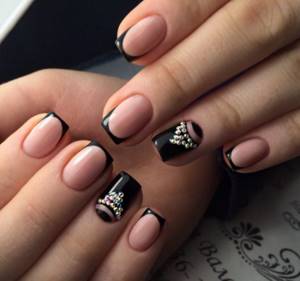
Square nail shapes are becoming more common among modern girls.
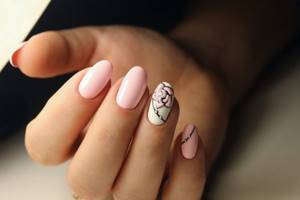
Oval nails look very gentle and feminine
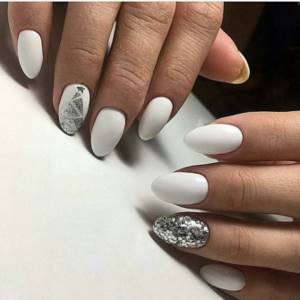
One of the main advantages of almond-shaped nails is that they are universal.
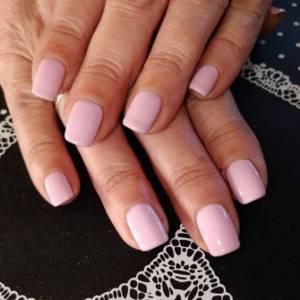
Rounded corners are best for short nails
Trim manicure
The procedure for performing a trimmed manicure at home is as follows:
- Wash your hands thoroughly and remove the old coating from your nails.
- Give the nail plate the desired shape with a nail file.
- Place a container of hot water on a spread napkin with a few drops of liquid soap added to it.
- The left hand is immersed in water for 15 minutes.
- Take 1 finger out of the water and wipe it with a towel.
- Pull the skin away from the surface of the nail with a special tool (pusher) or a wooden stick, and clean out the overgrown tissue (eponychium).
- Using scissors or tweezers, cut off the dead edges of the skin in the cuticle area on the nail folds.
- All nails are treated in the same way.
Treated nails can be coated with varnish or a colorless base, which will protect them from drying out. At the end, do a light massage with oil.
Video: cutting manicure technique
Unedged manicure technique
Unedged manicure is done on dry fingers without pre-soaking. To do this, you can use the following tools:
- a set of files with different grit levels;
- file for European manicure;
- ceramic “hoof” - a special tool for pushing back the cuticle.
To remove cuticles, preparations are produced on an acid or alkaline basis or containing fruit acids. With their help, you can easily soften the skin in those places where it is very keratinized. Some of the products, according to the instructions, need to be washed off after use. These preparations can be applied between manicures to prevent the eponychium from growing too quickly.
The sequence of actions for trimming manicure is as follows:
- Wash your hands first and dry with a towel.
- Apply cuticle remover.
- Push back the cuticle with a wooden stick.
- Remove the overgrown skin with a “hoof”.
- Treat rough skin ridges with a 180–200 grit file.
Video: unedged manicure at home
How to strengthen your nails with gel polish and acrylic powder
You can learn how to incomparably strengthen your nails at manicure training courses.
A manicure with gel polish is primarily a decorative coating, and not a care procedure. While the gel polish is on the nails, it really prevents peeling and breaking. But in the long term, such a manicure will not solve the problem of weak and brittle nails.
If you always want to have well-groomed hands, do not forget about other care methods.
It is better to get a manicure with gel polish in a beauty salon, but you can learn how to apply this coating yourself. To do this, you will need a special lamp, as well as a set of three products: base, colored varnish and top coat.
Together with experts, we have prepared detailed instructions on how to strengthen your nails with gel polish and acrylic powder:
- Before applying gel polish, nails must be prepared: push back and remove the cuticle, remove the natural gloss from the nail plate and apply a degreaser or primer.
- Next, apply a thin layer of base and dry it in a lamp (usually 2 minutes for an ultraviolet lamp and 30 seconds for an LED lamp).
- Apply a second layer of base and, without drying, sprinkle with acrylic powder using a pusher or fan brush. We send the nails to dry in the lamp.
- Shake off excess powder with a thick brush. If the surface is not very smooth, it can be treated a little with a buff.
- Then we apply a third layer of base and dry it again in the lamp. After this, you can apply a color coating and design, or you can leave your nails as is.
At this stage, it is better to apply a top coat rather than a base coat: your nails will look natural, shiny, and will not break.
Let us remind you that gel polish must be washed off using a special product - remover. Under no circumstances should you tear off or chew the coating - this will not strengthen your nails, but rather damage them.
We talked about the best ways to strengthen your nails at home. Try, experiment, choose the appropriate methods - and let your nails always be strong, your cuticles smooth, and your manicure beautiful!
Share the article with your friends if you found it interesting. Do you have experience strengthening your nails at home? Post your tips in the comments so everyone can see them!
Baths and masks for nails
Oil baths are considered one of the most useful home remedies for nail care. Any vegetable oil is suitable for their implementation:
- olive;
- linen;
- burdock;
- almond;
- coconut;
- castor;
- apricot.
The procedure is carried out as follows:
- Heat the oil to a temperature of 38–39 degrees.
- Dip your fingers into the container with oil for 10 minutes.
- Blot your fingers with a napkin. There is no need to wash your hands with soap.
You can add lemon juice or apple cider vinegar to the bath.
The course of treatment is 10 days. Then you need to repeat them once a week for preventive purposes.
Oil baths are very beneficial for nails
Salt baths are no less effective and useful. Pour 1 teaspoon of sea salt without additives into a glass of warm water and immerse your fingers in the solution for 20 minutes. The course of treatment consists of 15 procedures, followed by baths once a week for maintenance purposes.
Sea salt baths strengthen and nourish nails
I managed to significantly improve the condition of my nails with the help of salt baths. After a course of home treatment, the effect lasted for six months. However, it should be noted that the effectiveness of this procedure may depend on the composition of the salt. After relaxing at sea and “bathing” my nails in sea water, they pleased me with their strength and health for more than a year.
You can improve the condition of your hands and nails with the help of herbal decoctions and infusions:
- Dried chamomile flowers in the amount of 2 tablespoons are poured with a glass of boiling water and simmered over low heat for 15 minutes. The resulting mixture is filtered and allowed to cool. Add the same amount of fresh blackcurrant juice to 100 ml of decoction and make a bath for 20 minutes.
- Mix a tablespoon of dried chamomile flowers, St. John's wort and burdock root. Brew a glass of boiling water, leave for 15 minutes and let cool. Immerse your fingers in the bath for 15 minutes.
Herbal baths are done every other day for therapeutic purposes or once a week for prevention.
Chamomile decoction is an excellent remedy for improving the condition of nails.
A very effective nourishing and whitening bath can be made from the following components:
- 50 ml almond oil;
- juice of one lemon;
- 3 drops of iodine.
Fingers are immersed in the heated mixture for 15 minutes. Remaining oil is wiped off with a napkin or washed off with water without detergent.
Homemade nail masks
For therapeutic and caring masks, you can use available home remedies.
Cabbage mask with cream:
- Using a blender, grind a leaf of white cabbage and half a banana or a raw potato.
- Add a teaspoon of cream and honey to the resulting mixture.
- Apply the mask for 15–20 minutes.
- Wash off with a cotton swab or disk, moistening it in warm milk.
This procedure has a whitening effect and nourishes nails and skin well.
To whiten yellowed nails, you can take a teaspoon of almond oil and add 3 drops of essential oil:
- pine;
- cedar;
- sandalwood;
- patchouli;
- ylang-ylang;
- bergamot.
The mixture should be rubbed into the surface of the nail plates in the evenings.
With the help of essential oils, you can restore your nails to a healthy appearance, shine and transparency.
To get a healthy glow, you can make a mask from the following components:
- jojoba oil - 2 teaspoons;
- rose oil - 2 drops;
- lemon oil - 3 drops.
Rub the resulting mixture on your nails every evening.
You can lighten your nails with a mixture of equal amounts of lemon and thyme oils. Rub this mixture on your nails at night with light massage movements. If you replace thyme oil with eucalyptus oil, the marigolds will become transparent.
Useful recipes for healthy hands
Baths, even at home, are equivalent to spa treatments. They are very useful and very easy to implement. The main thing is to follow these steps step by step:
- prepare the nail - rid it of varnish;
- prepare all ingredients;
- mix all ingredients to a homogeneous mass or solution;
- put your hands in it for a certain time;
- wipe dry;
- lubricate with moisturizer.
It's all quite simple.
Soap solution and olive oil
- A soap bath is recommended for severely peeling nails. The duration of the procedure is 20 minutes. Ingredients: 1 glass of sea salt and 1 glass of water with liquid soap added to it.
- A solution with olive oil perfectly softens rough cuticles, strengthens nails well and makes hands very soft. The procedure takes 15 minutes. Only half a glass of warm olive oil will be useful.
The influence of nutrition on nail health
The condition of nails and skin is one of the important indicators of the general condition of the whole organism. There is a whole direction in medicine that allows you to identify many diseases by the appearance of the nail plates. To keep your nails healthy and strong, you need to pay attention to your diet. Experts recommend adhering to the following rules:
- the menu should contain as many fresh products as possible and a minimum of pickles and preserves;
- Regular consumption of fresh vegetable juices will help improve the condition of your nails and give them a healthy shine. You can mix cucumber and carrot juices in equal quantities - this mixture is rich in sulfur and silicon, which are necessary for nails;
- You need to include fresh greens in your diet. The more of it on the menu, the better your nails will look;
- You can increase the amount of magnesium in the body with celery and parsnip juice. Magnesium ions improve not only the condition of nails, but also the nervous system, which means that juices will help get rid of the neurotic habit of biting nails.
Table: substances and products beneficial for nails
| Product | What substances does it contain? | How does it affect nails? |
| Carrot |
| gives nails shine and strength |
| Nuts |
|
|
| Sesame seed |
|
|
| Dairy | calcium | prevents nail brittleness |
| Fish |
|
|
| Cucumbers, cabbage |
|
|
| Brown bread and cereals | B vitamins |
|
| Oatmeal and buckwheat, seeds | zinc | gives strength to nails |
| Seafood, seaweed |
|
|
| Persimmon |
|
|
| Pumpkin seeds | selenium | protects against aggressive external factors |
Nail beauty products
The beauty and health of your nails depends not only on care, but also on your diet. There are “beauty products”, the use of which makes nails, teeth and hair strong and beautiful.
First, eat foods rich in calcium. These include dairy and fermented milk products (cottage cheese, kefir, yogurt). Greens, liver, fish, eggs and nuts contain useful calcium.
Your menu should have enough fresh fruits, berries and vegetables. They are a source of essential vitamins and microelements. In particular, vitamin C is important for healthy nails; it is found in citrus fruits, black currants, rosehip decoction or syrup.
Take a course of vitamins twice a year. There are a huge number of different multivitamin complexes on sale; it is advisable to consult your doctor before use.
How to properly care for your toenails
The rules for caring for toenails include, first of all, personal hygiene. Since feet get dirty quite often, they need to be washed and cleaned regularly.
Toenail care includes the following rules:
- feet should be washed daily with mild toilet soap;
- in the evenings it is useful to take baths with a decoction of oak bark. To carry out this procedure, pour 0.5 liters of boiling water into 1 teaspoon of oak bark and cook for 5 minutes over low heat, then filter and allow to cool. The resulting decoction is diluted in 10 liters of water. You need to keep your feet in the bath for 15 minutes;
- You can remove accumulated dirt without damaging the tissues using a wooden stick;
- The edge of the nail is cut in a straight line. With this form, it will not grow into the skin;
- After cutting, the edge of the nail plate is treated with a nail file and polished. You need to move from the center of the nail to the edges - this way the stratum corneum will not crumble. Metal files should not be used.
Toenails also need regular care
One of the problems associated with toenails is delamination of the plates. There are several ways to deal with it:
- Lubricate the nail plates with alcohol tincture of iodine. The medicine is applied before bedtime using a cotton swab.
- Take foot baths with sea salt - the recipe is similar to that for hands.
You can lighten your nails with lemon juice. Take juice from 1 fruit for 1 liter of water.
After the baths, a special nourishing cream should be applied to your feet. There are a wide variety of foot products on sale today - it is important to choose the most suitable option for yourself. You can consult a pedicurist or dermatologist.
It is very important to choose the right shoes. It should be the right size and fit comfortably on your foot. This prevents foot deformation and ingrown toenails. Shoes must be kept clean to avoid fungal or bacterial infections.
Shoes should be comfortable and not deform the foot.
For those who wear socks, it is better to choose high-quality cotton products. Socks and stockings should be changed daily to avoid contamination and the development of infectious diseases.
If your feet sweat excessively, you can use special cosmetics and medications - antiperspirants.
To avoid the development of fungus, you should follow the rules of personal hygiene:
- Do not wear someone else's shoes under any circumstances;
- when going to the beach, swimming pool or public bath, wear special rubber shoes, since nail fungus spreads very quickly in warm, damp rooms;
- do not use other people’s manicure and bath accessories;
- wear comfortable shoes made of high-quality material that provides your feet with sufficient ventilation;
- maintain a normal immune system of the body - this will allow it to successfully resist fungal diseases;
- Promptly combat sweating of the feet, treat any cuts and scratches that have arisen.
If there are areas of peeling and redness on your toes, wet areas, nails have changed color, or an unpleasant odor appears, you should definitely seek help from a doctor. He will recommend special antifungal medications for the skin and nails.
Why does dirt always collect under my nails?
Every day, dirt accumulates under the nails - a suitable environment for the proliferation of fungal microorganisms. The space under the nail plate is an ideal place for harmful microorganisms. In addition, a warm environment creates favorable conditions for microbes, and the nail itself provides them with protection from negative external factors.
Regular hand washing does not get rid of bacteria in this area, so cleaning your nails can be considered an important and mandatory hygiene procedure.
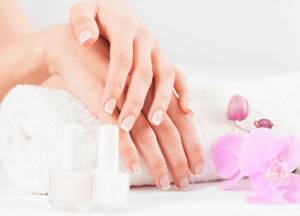
Lemon juice
Lemon is used as a skin whitening agent and can easily remove dirt stuck under the nails. To do this, you need to squeeze out lemon juice and spread it on the contaminated areas, then put on cotton gloves, hold for 10 minutes, brush your nail plates with a brush, and then wash your hands with soap.
If you have minor scratches or cracks on your hands, be careful, lemon can cause a burning sensation on your skin. After the procedure, lubricate your hands with moisturizer.
What precautions should you take?
It is important to be careful when cleaning and trimming your nails. Do not cut them too quickly - this can cause pain, even bleeding.
It is advisable that nail polish remover does not come into contact with the skin - this can dry it out.
It is easier to remove the cuticle once it has softened, but it is important not to cut yourself. Otherwise, it threatens, albeit minor, but still unpleasant problems - pain, slight bleeding and loss of the aesthetic appearance of the hands.
Balanced diet
Nails, skin and hair are three indicators of the health of the body, our lifestyle, habits and nutrition. Proper balanced nutrition is the key to beautiful nails, hair, and skin. Eating fast food, excess sweets, lack of vitamins, smoking or drinking alcohol, as well as dieting negatively affects the condition of nails.
Your diet should contain the required amount of both protein foods (eggs, meat, fish) and carbohydrates, be sure to eat vegetables and fruits. Nuts, fatty fish and seafood are very good for nails. If necessary, consult a doctor and he will prescribe vitamins for your nails.
Manicure - how to choose the right quality varnish
The final part of the manicure is applying nail polish. This is an important and responsible procedure. The quality of the varnish not only provides a beautiful, durable manicure, but also strengthens and protects the nail plate from brittleness and delamination. Low-quality varnish contains a lot of toxic substances. What should a high-quality varnish be like?
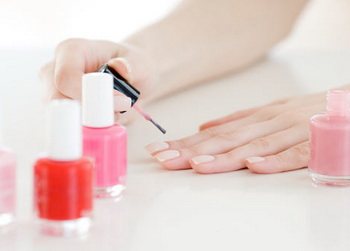
— Liquid, but applied in an even, dense layer (a drop of varnish from the brush should fall within 5 seconds); — elastic, after drying, sticks, does not peel off; - waterproof, immune to household chemicals.
Do not open bottles of varnish in the open air - the varnish becomes viscous and takes longer to dry.
How to clean a child's nails
How to wash dirt from under nails with a small child? You will have to do this much more often than in a situation with adults. Children love to play outside, and as a result, soil and other dirt accumulate under their nails quite often and in larger quantities. But it's not difficult to get rid of it.

It’s good if the baby likes to take a bath, then you can simply steam the hands and then rub them with a washcloth. But if your child doesn't want to sit in the bathtub, use nail scissors to gently remove dirt from under the nails.
What is a cuticle and why should you care for it?
The cuticle is a leathery roller that frames the matrix (the base of the nail plate). It performs a protective function, preventing the penetration of bacteria, infection, and dirt into the growth zone.
The cuticle consists of two parts. The upper part is called the eponychium. It is visible to the naked eye, and this is what we are used to calling the cuticle. The lower part is the pterygium. This is the keratinized layer of the cuticle, which also performs a protective function. It grows along with the nail plate and consists of whitish plates, films that are located under the cuticle and lateral sinuses. Partial renewal of the cuticle occurs in 14 days, complete renewal in 21 days.
The main principle of cuticle care is: “Remove dead cells and moisturize living ones.”
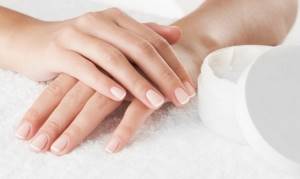
Why is regular care so important? The overgrown cuticle begins to dry, tear, and crack. All this causes the appearance of burrs. And they not only spoil the appearance of the manicure, but also cause pain. In addition, pathogenic bacteria and infection can get into the wounds, and then inflammation will begin.
In this case, the visit to the manicurist will have to be postponed and the treatment performed first, since:
- It will be difficult for both the master and the client to perform a manicure procedure on reddened, painful areas;
- If the inflamed cuticle is regularly injured, suppuration may begin, and then medical attention will be required.
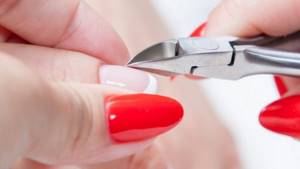
If wounds do appear on the cuticle and they bleed, then it is necessary to use hydrogen peroxide, baneocin or a disinfectant hemostatic agent. And then use healing drugs. This is necessary in order to avoid inflammation.
As mentioned above, the health of your nails depends on the condition of the cuticle. As it grows, the growth of the nail plate slows down, and grooves and other irregularities may appear on it.
In addition to the lack of regular care, there are several other factors that negatively affect the condition of the cuticle and can lead to its damage:
- Incorrect use of the tool during manicure can lead to injury to the cuticle. To avoid mistakes, we recommend taking a manicure course;
- working with someone else’s tools that have not been disinfected;
- allergic reaction;
- habit of biting nails;
- work in an aggressive environment: in water, with chemicals.
Particular attention to cuticle treatment
It is difficult even for a manicurist to process the edge of the cuticle perfectly evenly on both hands.
In order not to suffer every time with tweezers, wait a few months, carefully pushing away the excess layer of skin with an orange stick . During this time, the skin will grow evenly, and there will be no need to cut it off; it will be enough to perform the unedged manicure technique once a week. In addition, the cuticle will become soft and pliable, and hangnails will appear on your fingers less often.
Every day before going to bed, apply nourishing oil to your nails and the skin around them. As a result of this procedure, the nails will become stronger, and the dermis around will grow slowly and evenly.
»»»
Hydrogen oxide and ammonia
Peroxide is widely known as a useful household product that can be used to remove stubborn stains from many surfaces.
To prepare the cleaning solution, you will need hydrogen peroxide itself, as well as water, ammonia and dishwashing detergent or liquid soap. Bring the water to a boil, then add the remaining ingredients. For 4 tablespoons of water you need 6 tablespoons of dishwashing detergent, 40 ml of ammonia and 20 ml of peroxide.
When the mixture has cooled slightly, soak your fingers in it for 10 minutes and rinse thoroughly. Remember to use a soft brush to clean your nails better.
Also, be sure to smear your hands with any fatty cream after the procedure, as the solution dries out the skin very much.
Nail designs - photos
Comments
Inna 01/05/2016
I strengthened and restored my nails with Belweder healing varnish, detailed description and photo here: https://irecommend.ru/content/lak-deistvitelno-zasluzhivayushchii-vnimaniya
Useful links:
Sugar and olive oil
Oil your hands and rub a handful of granulated sugar in your palms. This “scrub” will not only remove dirt, but also cleanse dead skin, and the oil will soften the dermis and nourish it with useful substances.
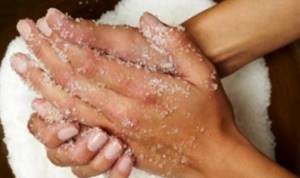
After processing, rinse your hands and apply oil again, let it absorb.

